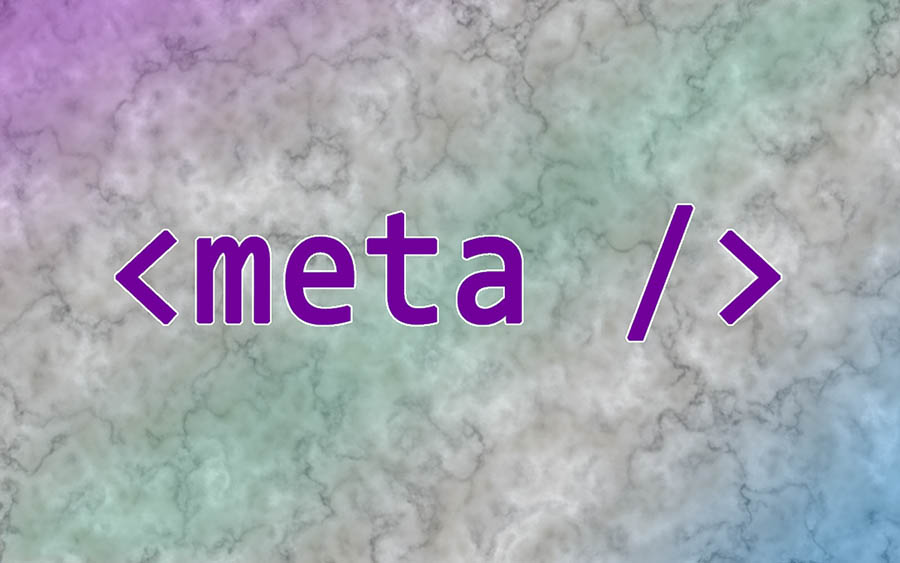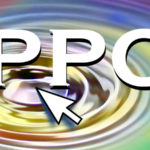Trademark Infringement via Meta Tags
I have served on more than one case where a defendant in a trademark infringement lawsuit used their competitor’s brand name(s) in their HTML Meta Tags as well as in other SEO-significant parts of webpages. I think marketers and website designers were more aware of this 10+ years ago, so here is an explanation for why this is often a risky practice that could get you sued.
Contents:
- What Are the Meta Tags?
- The Description Meta Tag
- The Keywords Meta Tag
- The Title Tag
- Meta Tags Are Important in Trademark Infringement Cases Because of Their Hidden Nature
- Comparative Advertising
- Other Tags and Elements Similar to Meta Tags
- Conclusion

What are the Meta Tags?
Just as a refresher, Meta Tags have a long history in Search Engine Optimization. As you may know, “metadata” is data-about-data so to speak, rather than being the content or data itself. Metadata provides information about the data. For instance, you might have an article about a topic, and metadata about that article might include metadata such as: the title of the article, the version, the topic category, the author, relevant keywords, how many paragraphs, related topics, and how many pages or words are in the article.
For webpages, metadata can be conveyed in a few ways. Historically, the oldest way to convey metadata about webpages was via a number of Meta Tags. Information such as authors, description of the page, keywords, publication date, language, and bot instructions can all be conveyed via Meta Tags.
The two best-known Meta Tags are the Description Meta Tag, and the Keywords Meta Tag.
Example of a Meta Description for this article:
<meta name=”description” content=”As hidden code elements in webpages, Meta Tags have sometimes been used in conducting Trademark Infringement. A history of the legality, and why not to do it!” />
In contemporary SEO guidance, the text of a Meta Description should be kept within 160 characters or less, although there is no formal length limit in HTML specifications that I am aware of.
Optimal Meta Descriptions should also be unique for each page of a website. Sometimes webdevelopers will copy one Meta Description across many pages, so Google and other search engines have other ways of generating snippet text for listings in search results, such as cobbling together some of the visible text found on the webpage.
(There is a long-running debate in search marketer circles as to whether click-through rate, a.k.a. “CTR,” and associated metrics might indeed be direct ranking signals. If CTR is used to determine rankings, then Meta Descriptions would be even more important as they would be deemed more directly influential to rankings in search.)
The Keywords Meta Tag was introduced in the earliest days of internet search engines, and was known to be influential with the search engines Infoseek, Inktomi, Go.com, Lycos, and AltaVista, circa 1995-1997. However, within about ten years the Keywords Meta Tag had become increasingly exploited and misused by web developers and search engine marketers to the point where search engines were downgrading its importance significantly. By roughly 2007 to 2009, the Keywords Meta Tag was deprecated and dropped by major search engines and, therefore, was not particularly used for ranking determinations after that point. Because it was so well known up until then, web developers continued using it for many years afterward. Also, because there are a lot of stale SEO guidance articles live on the web, there are still instances where inexperienced web developers and SEO marketers will still use Meta Keywords Tags on webpages.
When Meta Keywords were still in use, one could add keyword terms into the content attribute of the tags to help ensure that search engines would know the main topics of a page. Remember that search engines were dumber back in the earlier days of the internet, and did not have so much sophistication built in for associating alternate forms of words together, such as stemming, plural and singular forms, misspellings, and synonyms. Marketers would include all the main keywords of a page in this tag, including alternate forms such as plural/singular, misspellings, and synonyms.
The Keywords Meta Tag was a great way to include words that the page should rank for while not displaying the words visibly on the page. This was useful and even necessary to help the webpage appear in search results when consumers inevitably typed misspellings in search engines. The content for the tag would be added with commas delimiting between each keyword or keyword phrase. Capitalization did not matter.
Example of a Meta Keywords Tag for this article:
<meta name=”keywords” content=”meta tags, trademark infringement, meta keywords, meta descriptions, hiding keywords, meta tag infringement, hidden text, black hat seo” />
There was no length limit for Meta Keywords. Because of this, keywords tags could often be bloated, and they were misused more and more frequently (misused by incorporating keywords not relevant to the content of the page), causing the search engines to discontinue using them as they became less useful and reduced the relevancy of search results.
Example of the Title Tag for this article:
<title>Trademark Infringement via Meta Tags – Trademark Infringement Expert Witness</title>
The text within Title Tags is the title of the webpage, and this is typically displayed in search engine results as the hyperlinked text for the page’s listing. Thus, it is most visible to consumers when they conduct a search that matches with the webpage, and then see the title text reflected in the search results.
Title Tags are similarly important to Meta Descriptions in that they are so visible in search engine results and because of that they impact consumer click-through behavior. However, unlike Meta Descriptions, Title Tags are also used as direct ranking factors, so they directly influence page rankings in search, while Meta Descriptions can only indirectly affect rankings. Over the last two decades, Title Tags have become pretty much the most important ranking factor out of all on-page ranking factors. When they are optimally composed, Title Tags affect how relevant a webpage is likely to be for a search user’s query. If the user’s query closely matches keywords found in the Title Tag, then the search engine is more likely to consider the page to be a higher relevancy for the search. (There are, naturally, many caveats to this — such as whether the Title text matches the theme and contents of the webpage it represents, and also the theme of the website, etc. Google is now commonly rewriting a high percentage of page Titles when it believes it can generate a better Title.)
Title Tags are slightly more visible to website users than Meta Descriptions. Not only does the Title appear in the search results for the page, but it can also appear in the topbar of browser windows and in the browser’s tabs at the top. When a website visitor mouses over the tab at the top of their browsers, the page’s Title will be displayed. In fact, the domain name is also displayed as well as a thumbnail-sized screenshot of the top of the page. This feature is called Tab Hover Cards or Tab Previews.
Note: The classic HTML Title Tag is marked as <title> within the page code, as shown in the above example. The Title text is between opening and closing Title Tags as: <title>Title of the Page Here</title>
Unfortunately, some less knowledgeable people along the line misunderstood that while the Title is technically a type of metadata, it is not coded in Meta Tags. So, one does not convey the Title to search engines by including a different Meta Tag such as:
<meta name=”title” content=”This Is The Wrong Way To Code Webpage Titles!” />
The erroneous assumption has persisted, and unsophisticated SEO consultants or web developers will continue to include it under the assumption that “it could help.” But, it really does nothing, and Google’s documentation shows it is not a supported tag (because it is not in the documented Meta Tags). It could still be used in trademark litigation, however, as the contents could indicate an intentional effort to optimize a page to rank for a competitor’s trademark.
Meta Tags Are Important in Trademark Infringement Cases Because of Their Hidden Nature
Meta Tags and their contents are fairly hidden elements of webpages, and this hidden nature is part of why the tags can be considered to be devious when used in certain ways.
For one, if Meta Tags are used to convey keywords that are inappropriate for the webpage, then that is considered to be misleading and is considered to be a “Spam Tactic” or “Black Hat SEO” practice by the search engines. In order to maintain the quality and relevancy of their search results, search engines do not want marketers to optimize pages to appear for irrelevant keywords. Optimizing a page to appear for children searching for “teddy bears” when the page is actually trying to sell them video game subscriptions (and none of the games involve teddy bears) would be an example of this. Another example would be to try to make a webpage appear for a competitor’s brand name search — because your page does not truly offer that brand to consumers.
Hidden text elements on webpages have long been used for keyword cramming, which is also against search engine rules. This was one reason why search engines deprecated the Keywords Meta Tag: It was often over-crammed with words whereas most webpages’ topics could be described in relatively few words. Invisible page text elements are attractive for this misuse because a long list of keywords is not attractive nor user-friendly, while hiding such a list on the page seems to enable one to maximize the page’s optimization while keeping it visually attractive. This usually does not work anymore as it is easily detected. But, that has not stopped black hat SEOs from still attempting to use the tactic — just in the last couple of years I discovered a hidden text segment at the bottom of all website pages of a company that sued my client. Their expert witness (who was not qualified to speak on SEO matters) had falsely claimed my client was conducting illicit SEO which was not the case, while they had a very obviously invisible keywords DIV element on all their website pages!
The first Meta Tags trademark infringement lawsuit in the United States was probably Oppendahl & Larson, v. Advanced Concepts, Robert A. Welch, Code Team – LBK, Inc., George Williams, Professional Website Development, Dave Dean, MSI Marketing, Inc., and Internet Business Services, filed in U.S. District Court in Colorado, Civil Action No. 97-Z-1592, on July 23, 1997. The complaint claimed that the defendants were using the plaintiff’s mark, “OPPEDAHL & LARSON,” in their webcode to appear prominently in search results for the plaintiff’s name, but “Oppendahl” and “Larson” did not appear in the webpages’ visible text — it was hidden in the webpage’s HTML code for the purpose of ranking in search engines — and this constituted “false advertising, false designation of origin, and false representation in and affecting interstate commerce in violation of Section 43(a) of the Lanham Act, 15 U.S.C. § 1125(a).”
In the Oppendahl & Larson, v. Advanced Concepts, et al case, the mark could have been visible in the snippet text in search results, but was not otherwise visible when the webpages were viewed. But, the fact that these companies had no legitimate reason to use the trademark in their marketing efforts conveyed persuasive weight to the claim, and the court issued an injunction from using the brand name without authorization.
Legal commentary from 1997 to 1998 suggested that infringement claims involving Meta Tags might base their causes of action on trademark infringement, unfair competition, and dilution. In 1999, the Ninth Circuit Court of Appeals ruled in “Brookfield Communications, Inc. v. West Coast Entertainment Corp.” that unauthorized use of a registered trademark in the metatags for a website could constitute trademark infringement under the Lanham Act, section 15 U.S.C. §1125(a), even though the consumer viewing the website might never actually see the metatags and even though the consumer is not actually confused by the results of the search that the search engine displays. The general principle seemed to be that an advertiser may not improperly trade on the registered marks of another.
In the search engine marketing industry, a great many people were made aware of the potential legal liabilities involved with Meta Tags through coverage by Danny Sullivan, a former journalist who founded the first search engine news website, Search Engine Watch. Sullivan provided a number of articles informing online marketers about the emerging legal issues involved in search engine marketing, including “Search Engines And Legal Issues“ (2004), “Lawsuit Over Meta Tag Keywords“ (1997), and “Meta Tag Lawsuits“ (2004).
In fact, Sullivan also acted as an expert witness in a few of the early search engine marketing cases, including for Terri Welles, in her case involving Playboy (they had objected to her fair use mentions of Playboy marks on her website as she was a former Playboy bunny — she prevailed). He also served on behalf of Excite & Netscape in the case Playboy filed against them involving banner ads, and he worked pro bono with Carla Virga’s legal team in the case filed against her by Terminix, which involved Meta Tags.
Funnily enough, I served as expert witness for the plaintiffs in a lawsuit where the defendants’ counsel hired Danny Sullivan to rebut my expert report and testimony! The case was “Roseville Fullerton Burton Holdings, LLC DBA Discounted Wheel Warehouse, a California Limited Liability Company v. SOCAL Wheels, Inc., a California Corporation; Wheel Warehouse, Inc., a California Corporation and DOES 1-10, inclusive” in roughly 2015, and it involved claims of trademark infringement conducted through SEO, including Meta Tags. As I recall, I had found that the defendants had used an allegedly infringing mark in multiple well-established HTML elements important to SEO, such as in hidden elements image ALT attributes including the Meta Descriptions, and Meta Keywords Tags. Apparently, just for good measure, the SEO consultant involved also included keywords in HTML comment text! After the defendants’ counsel received my expert report in the matter, they apparently noticed I had cited Sullivan’s articles talking about Meta Keywords a number of times in the footnotes, and they approached him to try to counter my testimony.
(If memory serves me, much of Sullivan’s rebuttal hinged upon the fact that the defendants had not used the precise brand name at issue but a closely similar word, such as a singular or plural variant of the name. While this criticism was literally true, I believe it would not have sufficed for the defendants at trial as U.S. trademark law has long established that brand names that are too similar may result in a likelihood for confusion, meaning that merely changing one letter or so of a brand name does not allow one to escape from being held liable for trademark infringement. Regardless, the merits of our respective reports and testimony were never ultimately decided at court as the case, and the connected countersuit were canceled by the judge on purely legal grounds due to laches — a sort of statute of limitations in such lawsuits.)
I later served on another case that included trademark infringement allegations and meta tags when I served on behalf of PODS in “PODS Enterprises, Inc. v. U-Haul International, Inc.”. In that case, U-Haul had begun using the mark, “PODS,” in a generic manner (“U-Haul Moving pods”) as though the term “PODS” had been used commonly in the moving industry. This was a very blatant effort to genericize the PODS trademark, which would have rendered its unique registered trademark essentially null, allowing any company to market its moving and storage services with the PODS brand name. U-Haul included the “PODS” name into both its Meta Description Tags and Keywords Tag as well as other places, and they did so across tens of thousands of pages on the uhaul.com website. Hitwise data I obtained for the case as well as surveying Google’s search results, showed that the optimizations involving “PODS” resulted in thousands and thousands of U-Haul’s pages attaining higher rankings than PODS’ own website in many local markets across the United States. The flagrant and intentional infringement resulted in a precedent-setting $62 million damages award as a result of the infringement, and a large chunk of that award was directly derived from U-Haul’s inclusion of the “PODS” term in the Meta Descriptions as well as the Titles.
Under trademark infringement laws, each discrete instance of a mark being used in an inappropriate context can be counted as a separate “misimpression,” meaning that if the trademark is found at the top, middle, and bottom of an infringer’s webpage, then three misimpressions could be counted for each time the webpage was viewed by a consumer. The PODS v. U-Haul corrective advertising damages were calculated based on the number of misimpressions caused by U-Haul’s misbehavior. Thus, U-Haul’s incorporation of the PODS name in Titles and Meta Description resulted in many of the uhaul.com listings in Google search results displaying “pods” with their listings — all those search impressions added up as misimpressions, even for instances when users did not opt to click into the webpage. All the users who were exposed to the mark on the U-Haul website were likewise accounted as further misimpressions, driving up one of the largest corrective advertising infringement awards in history.
These past cases demonstrate that incorporating trademarks of competitors — or, trademarks you do not have a reasonable basis to be using — could pose a significant legal liability.
When you are trying to get your website to rank prominently when your competitor’s name is searched for, brand targeting in the meta tags is fairly aggressive marketing. However, it can be acceptable and above board if it is done through fair use of their brand names. In most instances, fair use of your competitor’s brand name can only be accomplished through comparative advertising.
Comparative Advertising
Comparative Advertising is when one provides a comparison between one’s own products or services (or company) and that of competitors. Brand comparisons are considered beneficial to consumers when they are truthful and nondeceptive. Such comparisons can aid consumers in making rational purchase decisions, and because of this, Comparative Advertising can lead to lower prices in the marketplace while encouraging product improvements and innovations.
So, if you have a webpage, such as a blog post, that compares your product/service to your competitor’s, and you are highlighting advantages yours has over theirs, then it would be entirely fair and accurate to optimize your webpage for both brands so consumers could easily find it and understand what it is about.
In such a case, incorporating your competitor’s brand name in the Meta Description text would make sense, and should be considered a reasonable, fair use, just as it should be considered alright to include the brand name in any of the page’s optimizations, as long as the optimizations follow search engines’ guidelines.
However, even webpages that are created for the purpose of comparative advertising can result in Lanham Act claims of unfair competition and false advertising if the comparisons are not honest, fair, and accurate. Comparative advertising is an allowed way that one may have website content that could rank for one’s competitor’s name searches.
Comparative advertising is the main exception to an otherwise solid rule-of-thumb that one should never have a competitor’s trademark included in one’s own webpages’ Meta Descriptions and Meta Keywords. Just be assiduous about representing your competitor truthfully and accurately — do not give in to the typical marketing or salesman penchant for exaggerating and misstating differences. I have worked on a few cases where deceptive, false, and misleading comparative advertising was conducted. Trying to make yourself look better by tearing down your competitor is typically not a good look, and such cases often are driven on both sides by hyperactive egos and can involve many esoteric quibbles that can be lost on consumers.
Other Tags & Elements Similar to Meta Tags
Those experienced with webpage design likely are aware that there are more Meta Tags beyond the Keywords and Description Meta Tags commonly used in SEO.
Facebook Open Graph Tags are also a type of Meta Tags that can pass page titles, main images, page descriptions, the site name, and more. These tags enable Facebook to easily display previews of web content when users post links on the social media platform.
Twitter Cards are yet another type of Meta Tags that also pass titles, descriptions, and images, allowing Twitter/X to display previews of web content within Tweets. Without the Twitter Cards, any links added to Tweets merely appear as the raw text link. By contrast, pages that have the Twitter Cards treatment implemented will show the previewed data in Tweets, making them more attractive and engaging.
Hypothetically, both Facebook OG Tags and Twitter Cards can be misused just as regular Description and Keywords Meta Tags have been. Most content management software is coded to use the same page text that is inserted within the <title></title> tags, in the Twitter and OG titles as well. Likewise, the text used for the Meta Description would also be parsed into the Facebook OG Description Meta Tag. In practice, the title and description elements would simultaneously used in parallel in all three types of Meta Tags, so an infringing term in one would likely be found in its parallel tags, too. It is possible that different text could be used in all three, so it is hypothetically possible for infringement lawsuits to be filed solely on the basis of a Twitter Card tag or an Open Graph tag.
Another type of code that can pass metadata is structured markup, also known as semantic markup. Google and other major search engines collaborated to support various structured data types, and this can be seen at Schema.org. Google and Microsoft Bing have supported various methods for structured data, including: JSON-LD, Microdata, RDFa, and Microformats. Structured data assists search engines in interpreting data on webpages, allowing them to provide listings with special formatting, such as articles, videos, personal profiles, recipes, data tables, lists, breadcrumbs, and more. While structured data is frequently parallel to the very same data displayed on the webpage, it is quite possible for the structured data to convey something different to display in search engine results listings than what is visible on the webpage, such as in the case of Javascript-delivered markup found with JSON-LD.
Conclusion
Meta Tags and metadata continue to be a core element of webpages and web content, and they also can be elements that are used in trademark infringement campaigns.
Because such data can frequently be invisible to webpage visitors, or partially visible as it is shown in search result listing snippets, the use of others’ names and marks in Meta Tags can appear to be done in a willful, sneaky way that is intended to obtain unfair advantage in search engines resulting in dilution and diversion of a company’s branded web traffic. Care should be exercised when incorporating others’ brand names in your website, and if you conduct comparative advertising, be scrupulously honest, fair, and accurate when representing competitors’ companies, products and services.
References:
- FTC Code of Federal Regulations, Part 14.15: In regard to comparative advertising
- Meta Keywords Tag 101: How To “Legally” Hide Words On Your Pages For Search Engines by Danny Sullivan, Search Engine Land, September 5, 2007
- Meta Tag Lawsuits by Danny Sullivan, Search Engine Watch, April 20, 2004
- “An Invisible Mark: A Meta-Tag Controversy” by Barbara Anna McCoy, Journal of Small Engineering and Business Law, 2: 377, 1998.
- “Unauthorized Use of Trademarks In Web Site ‘Metatags’ Constitutes Trademark Infringement“ by Thomas M. Brownell, Holland & Knight LLP, September 1, 1999.




